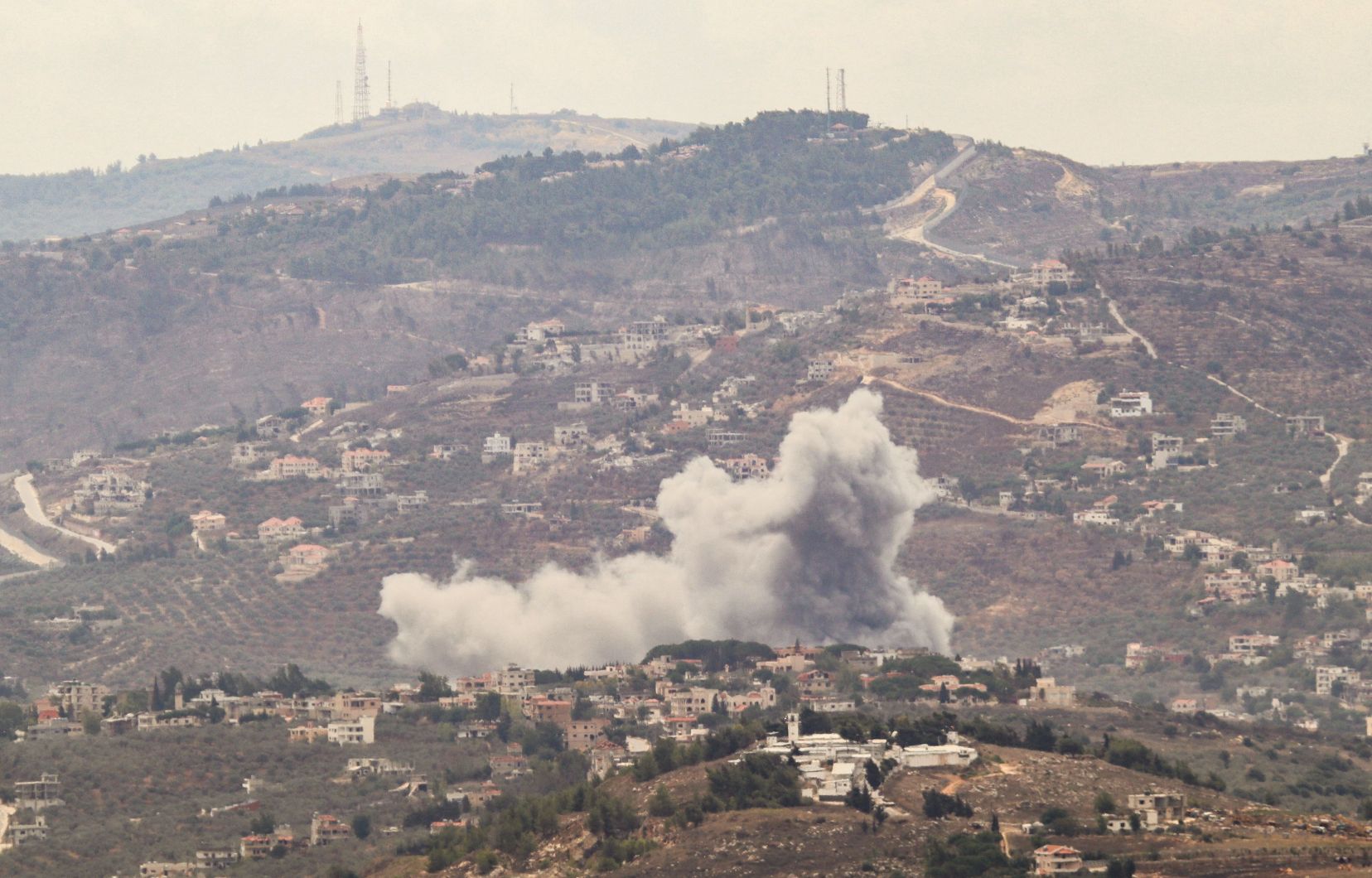The Israeli army announced that it had bombed around a hundred Hezbollah targets in Lebanon, where the leader of the Islamist movement promised a “terrible” response on Thursday after the spectacular attack which targeted its transmission devices, leaving 37 dead and thousands injured.
Following the wave of pager and walkie-talkie explosions across Lebanon on Tuesday and Wednesday, Hezbollah leader Hassan Nasrallah said Israel would receive “a terrible punishment, where it expects it and where it does not expect it.” Israel has not commented on the attack.
The leader of the Iranian-backed armed movement accused Israel of “crossing all red lines,” denouncing a “massacre” that could constitute an “act of war” or even a “declaration of war.”
The attack, which took place in Hezbollah strongholds in the southern suburbs of Beirut, as well as in the south and east of Lebanon, left 37 dead and 2,931 injured in two days.
The UN and Washington have warned of an “escalation” after this unprecedented attack which has further revived fears of a conflagration in the Middle East, almost a year after the start of the war between Israel and the Palestinian Islamist movement Hamas, an ally of Hezbollah, in the Gaza Strip.
French President Emmanuel Macron sent a video message to the Lebanese on Thursday, assuring them that a “diplomatic path exists.”
As Hassan Nasrallah delivered his speech, Israeli aircraft flew low over Beirut, breaking the sound barrier.
Israel also continued its air raids in southern Lebanon, saying it had targeted Hezbollah rocket launchers “ready to be used immediately to fire on Israeli territory.”
In total, it claimed to have struck “around 100 launchers” and other infrastructure “representing around 1,000 guns” on Thursday.
According to the Lebanese news agency Ani, Israeli aircraft have struck southern Lebanon at least 52 times. These bombardments were among the most intense since the start of the exchange of fire on the Israeli-Lebanese border in October 2023.
For its part, Hezbollah claimed responsibility for at least 17 attacks on 14 military targets in northern Israel on Thursday.
“Programmed” to explode
The first wave of pager explosions came Tuesday shortly after Israel announced that it was expanding its war aims to the northern front, the border with Lebanon, to allow tens of thousands of northern residents to return home.
The latter were displaced by cross-border clashes, which have been occurring almost daily for almost a year, between the Israeli army and Hezbollah, which claims to be acting in support of Hamas.
“You will not be able to bring the people of the north” back home, Hassan Nasrallah retorted to Israeli leaders. “Lebanon’s front with Israel will remain open until the end of the aggression in Gaza,” he said.
Israeli Defense Minister Yoav Gallant announced Wednesday that the “center of gravity” of the war was moving “toward the north.” The main objectives stated so far were the destruction of Hamas, in power in Gaza since 2007, and the return of hostages held in the Palestinian territory.
“We are doing our jobs simultaneously,” Gallant said.
Military operations against Hezbollah “will continue,” Yoav Gallant assured on Thursday.
According to a Lebanese security official, the transmission devices used by Hezbollah members “were pre-programmed to explode.”
A preliminary investigation by Lebanese authorities shows that the devices were booby-trapped before entering the country, according to a letter from the Lebanese mission to the UN seen by AFP on Thursday.
The head of Lebanese diplomacy, Abdallah Bou Habib, announced the filing of a complaint with the UN Security Council following “the Israeli cyberterrorist aggression which constitutes a war crime.”
“Overwhelming response”
The Revolutionary Guards, Iran’s ideological army, have vowed “a crushing response from the resistance front,” the name Iran gives to armed groups in the region hostile to Israel.
US President Joe Biden nevertheless believes that a diplomatic resolution to the conflict between Israel and Hezbollah is “feasible”: it is “the best option”, the White House spokeswoman stressed on Thursday.
Meanwhile, strikes continue in Gaza, which is under siege and plunged into a major humanitarian crisis.
According to the Civil Defense, two Israeli strikes left at least 14 dead on Friday morning.
One of them targeted a house in the Nusseirat camp in the center of the territory, killing eight people, while six people, including children, were killed in the bombing of a building in Gaza City in the north, according to the source.
The war broke out on October 7, 2023, when Hamas commandos carried out an unprecedented attack on Israeli soil that resulted in the deaths of 1,205 people, mostly civilians, according to an AFP tally based on official Israeli figures that include hostages who died or were killed in captivity in the Gaza Strip.
Of the 251 people abducted during the attack, 97 are still being held in Gaza, 33 of whom have been declared dead by the army.
More than 41,272 Palestinians have been killed in Israel’s retaliatory military campaign in the Gaza Strip, the majority of them civilians, according to data from the Hamas government’s health ministry in Gaza, deemed reliable by the UN.
